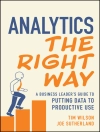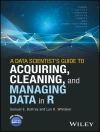The book presents the state of the art and results and also includes articles pointing to future developments. Most of the articles center around the theme of linear partial differential equations. Major aspects are fast solvers in elastoplasticity, symbolic analysis for boundary problems, symbolic treatment of operators, computer algebra, and finite element methods, a symbolic approach to finite difference schemes, cylindrical algebraic decomposition and local Fourier analysis, and white noise analysis for stochastic partial differential equations. Further numerical-symbolic topics range from applied and computational geometry to computer algebra methods used for total variation energy minimization.
Inhoudsopgave
Fast solvers and a posteriori error estimates in elastoplasticity. – Symbolic analysis for boundary problems: from rewriting to parametrized Groebner Bases. – approximate implicitization of space curves. – A symbolic-numeric algorithm for genus computation. – Linear partial differential equations and linear partial differential operators in computer algebra. – Computer algebra meets finite elements: an efficient implementation for Maxwell’s Equations. – Sound and compelte verificcation condition generator for functional recursive programs. – Analytical evaluations of double integral expressions related to total variation. – A symbolic approach to generation and analysis of finite difference schemes of partial differential equations. – The ‘Seven Dwarfs’ of symbolic computation. – An introduction to automated discovery in geometry through symbolic computation. – White noise analysis for stochastic partial differential equations. – Computing smoothing rates of collective point smoothers for optimal control problems using symbolic computation. – Sparsity optimized high-order finite element functions on simplices.












